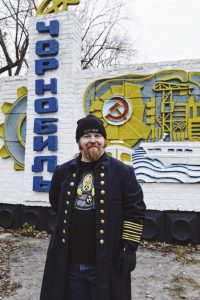
When you have the incredibly photogenic and not bulldozed ghost city of Pripyat to take pictures of, it’s easy to forget the other towns and villages that were once there, or still are in the case of the city of Chernobyl. Generally the name “Chernobyl” is associated in everyone’s head with the the reactor that went up in smoke, Chernobyl-4, rather than the seat of the old administrative district. I can understand forgetting it. It wasn’t a sexy place with fascinating architecture like Pripyat, just solid utilitarian construction like the buildings of a county corporation yard. Except, to paraphrase Harry Potter, Chernobyl is the city that lived. While everyone in the exclusion zone got evacuated, Chernobyl has since repopulated with a few hundred resettlers. Also, on a transitory basis, all the Ukrainian State Emergency Service workers (the agency that administers the exclusion zone among other things) stay there a few days to two weeks, rotating to their posting outside the zone for an equivalent amount of “cool off” time before coming back. It even has an operating market and the church that serves the resettlers in town, those that come in from more distant farms, the workers, and tourists. It is the hub for life in the exclusion zone. Above all, if you’re a visitor to the exclusion zone and stay there, unless you have friends that are resettlers you’ll be sleeping at the Desyatka Hotel. That said, it’s comparatively a ghost town when you realize that with all those folks added together it has less than a tenth of it’s previous population.
But what Chernobyl mainly struck me as, other than a diminished but still active regional center, was a memorial. Dozens of small towns and villages vanished from the map after the accident as the bulldozers knocked all the buildings down and then buried them like latter day kurgans. No, not The Kurgan but I know you probably thought it. But “Why?” you ask. “If the Liquidators could decon the cities of Pripyat and Chernobyl, why couldn’t they clean all those towns?” And there is answer to that which comes down to one word: wood. If your construction is primarily wood, we can’t decon it and there’s nothing to be done other than dispose of it as waste. Entire buildings and whole villages, crushed and buried under a layer of dirt and then a stake with a little radiation trefoil on it to warn people “DO NOT DIG! HERE BE RADIATION, NOT TREASURE, ME MATEYS!”
(As an aside, the complicated question of how to communicate STAY AWAY to our descendants for the next 10,000 years regarding nuclear waste is part of the genesis of my beloved Long Now Foundation. Humans, being the people we are, which is remarkably consistent across time and space, tend to see dire warnings of danger and curses as instead invitation to come [Terrence & Phillip voice] Look For Treasure!)
I am to understand that the Japanese authorities have figured out a methodology to decon wood for the Sendai Prefecture to allow reoccupation of the towns. I am VERY interested to learn more about how they do this because this would be a game changer for what can and can’t be saved in an accident/contamination incident. Needless to say, the Soviet Liquidators didn’t have this at their disposal. They did have spray glue, bulldozers, and dirt which are all very economical, which is why there are several memorials to the missing communities in Chernobyl. I am particularly fond of this one which I called the Graveyard of Villages. Our minder thought it was an apt name.
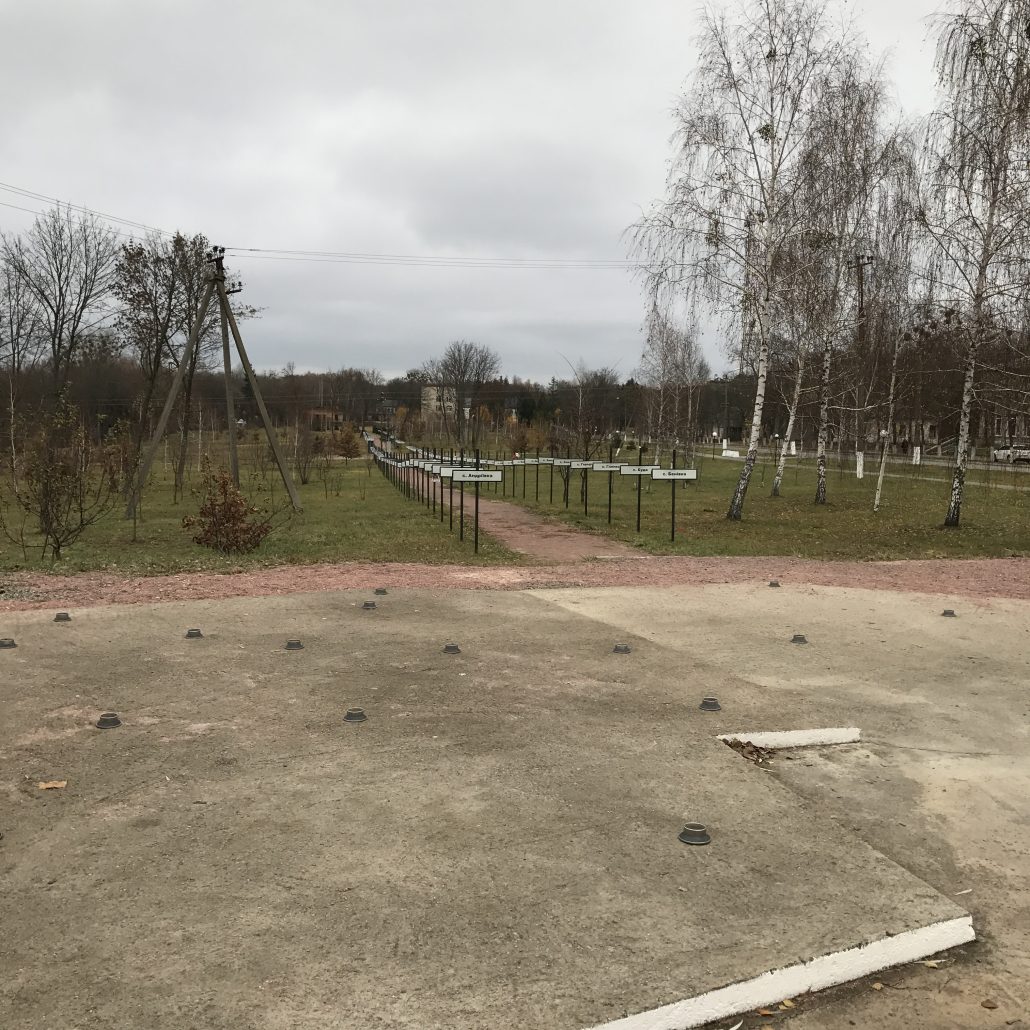
This, incidentally, is all that’s left of a building when a team of Liquidators are done with it and fast forward with 30 years of plant growth.
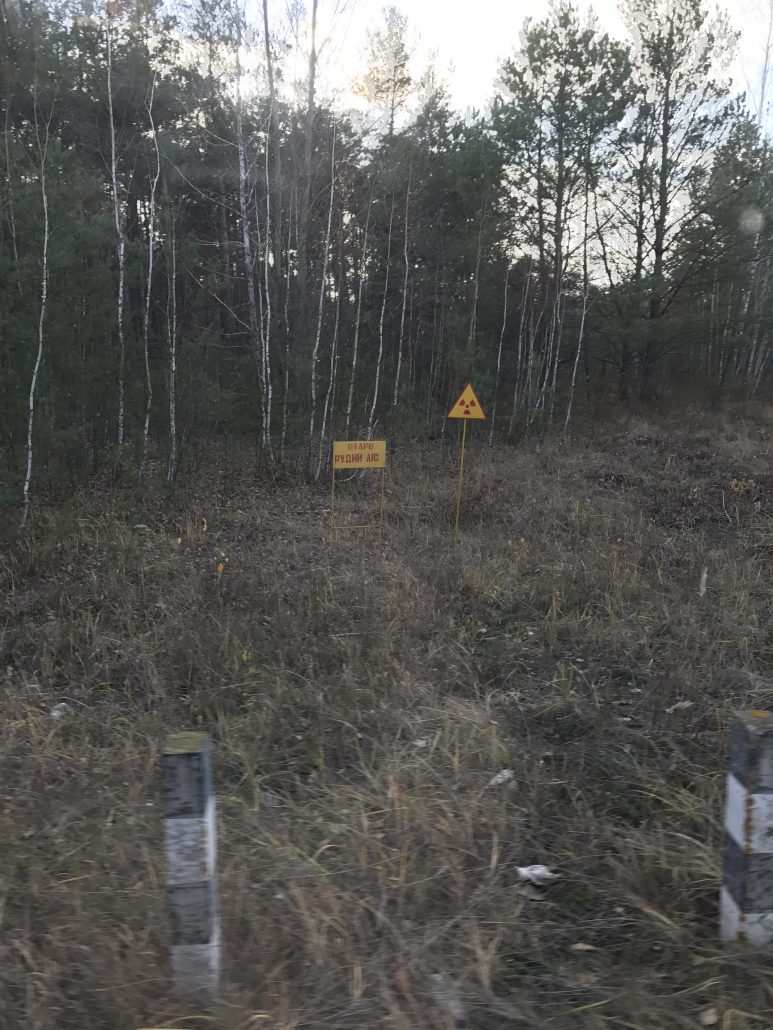
We got truly lucky with our trip out to Reactor 4 because they were closing the zone the next day to begin moving the New Safe Confinement (NSC) structure over the old Sarcophagus at 2 meters per hour. By comparison, the old Kennedy Space Center crawler-transporter for the Space Shuttle rolled from the Vehicle Assembly Building to Lauchpad 39A/B at the comparatively breakneck drag racing speed of 1.5mph (I wish I still had a picture of that speed limit sign on the crawlerway from my last visit to KSC). So, we were the lucky last people who weren’t actually working on the NSC to get to see the two as separate structures. Behold!
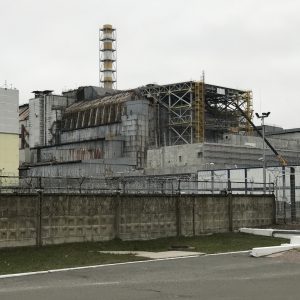
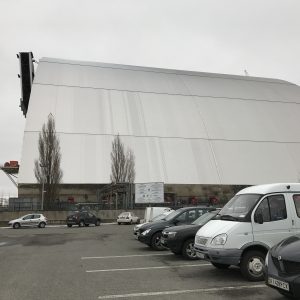
I’m not going to tell the tale of the loss of life, the danger emergency responders braved knowingly and unknowingly to try to get some kind of control over the situation, the difficulty figuring out how to build the Sarcophagus structure in short order, much less doing it, again. The internet is full of accounts of the Battle of Chernobyl and the mobilization of the resources and technical/scientific acumen of the entire Soviet Union to get ahead of this disaster. The effort involved absolutely deserves to be compared to the Battle of Stalingrad; it was a win at all costs or the nation will perish situation. And, if you ask Gorbachev, he was quite certain that they won AND the nation perished because of it; that the staggering cost of bringing the meltdown and fire to a stable and contained state may have bankrupted the Soviet Union. Since the Soviet command economy doesn’t quite map to a market economy for equivalence in expenditures, suffice it to say that the official estimate of costs was 18 billion rubles. While officially the pre-1988 exchange rate had been .9USD to the ruble, there was no actual exchange rate, as it was illegal for citizens to exchange currency. Technically, the only reason the Soviet bicyclists I met in 7th grade didn’t get in trouble with their KGB minders for giving a coin collecting nerd a 1 kopek coin when they visited my school was that I gave them nothing in exchange. He was quite clear that I shouldn’t. That said, the amount of time, effort and resources that 18 billion rubles represented in the command economy was staggering. Literally, as the economy couldn’t take that hit, keep trying to keep everything else like they had, and the Soviet Union became unstable in its wake.
At least, that’s Gorbachev’s take on the matter. I’m inclined to believe the last premier on this.
Of course 18 billion is merely the cost of the materiel and labor to bring the disaster under control. This doesn’t count the cost of losing THE ENTIRE EXCLUSION ZONE’s economic productivity, much less the value of all the things in it. One reason Chernobyl Reactors 1-3 kept running until the year 2000 was that the region needed them to keep remaining industry and modern living in cities running and absolutely could not afford to replace them. When the deal to was made to shut them all down, Ukraine got a nice replacement oil burning power plant which was sufficient for need by then. The reactors had been expensive to build and abandoning them was a heck of a loss, especially considering the Soviets had been following the proper model of reactor construction/rotation here: one old one you’d be decommissioning soon, one half way through operational life, one that just came online, and one you were still building. This is sort of like fallowing fields, but to allow succession of designs to allow engineering improvements to propagate and to keep any reactor from being run well into decrepitude (SEE ALSO: the United States nuclear power stations).
But Chernobyl was special. This region was booming, a showcase for the future so they weren’t just following the reactor succession model. They were planning to expand capacity by making a complete second reactor complex containing Chernobyl 5-8. They never got beyond building the cooling towers for #5 and #6 before the accident happened.
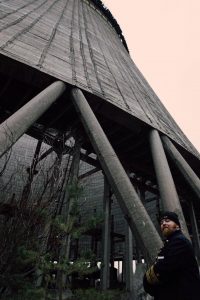
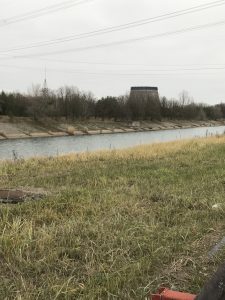
Wandering through the acoustically perfect hyperbola of a cooling tower is an echo chamber like I’ve never experienced before. Every footstep came back to me from every direction. As a piece of health and safety advice, they never quite finished the Chernobyl-5 cooling tower, even though it looks much more complete than Chernobyl-6’s, and the rebar exposed to the elements up above is slowly tearing the concrete apart. When a chunk falls to the ground below inside the cooling tower, of which there is plenty of evidence, try to act surprised.
Now, the reactors weren’t the only very expensive thing named Chernobyl in the exclusion zone. The Army, being the Red Army with all attendant powers, couldn’t resist taking advantage of all this plentiful power for a little pet project that they kept secret and didn’t put on the maps. As an early warning system, they’d been working on an Over-The-Horizon radar system known as Duga-3 for skipping a signal off the ionosphere to look thousands of miles away for missile or bomber launches. The receiver part of the array was located near the power plant, taking up a decent percentage of the power station’s output and was designated Chernobyl-2, obviously to maximize confusion in people writing and reading about the topic. This antenna array was about the size of two football fields, tipped up on their side and pointed due north to listen over the pole to North Dakota.
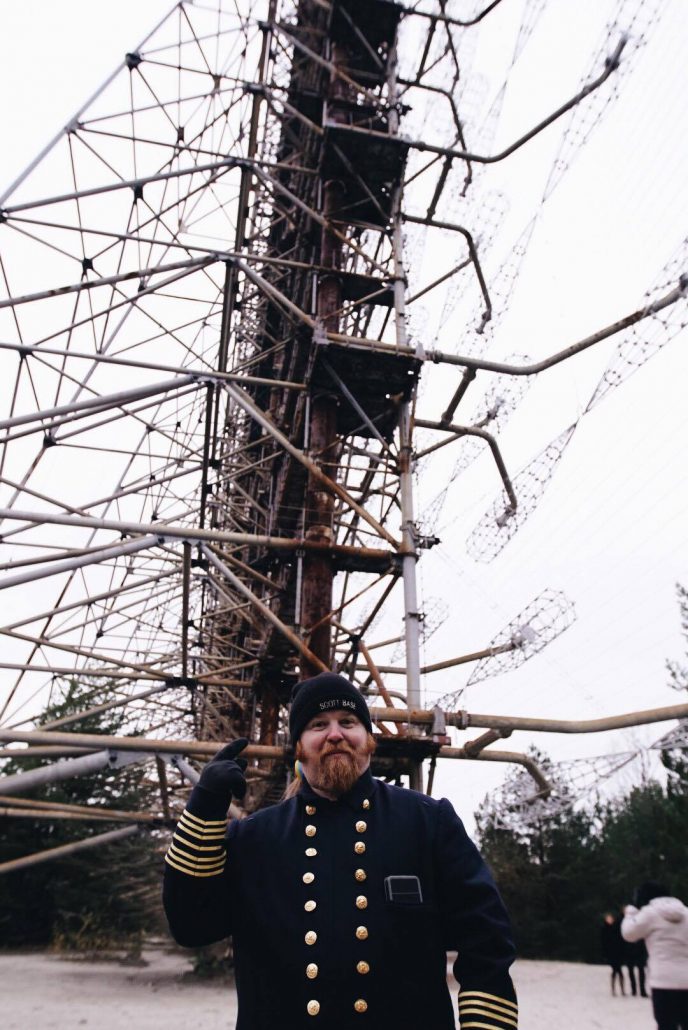
While this is an impressive antenna, I would like you to take a moment to think about the signal processing for a device like this. The amount of computing power and electronics, and what they looked like with a late 1970s/early 1980s design. This secret installation that had its own population of a few thousand needed to operate it. Now think about the power and cooling needs for that kind of hardware.
HINT: Like a old Volkswagen, they decided to go with air cooling. Fans are easy, right? And Ukraine’s pretty cool the rest of the time.
I’ll wait a moment for you to envision where this all goes wrong. [sips beer]
Okay, now light Reactor 4 light on fire, spewing radioactive fallout into the air. You know, the air which you use to cool your computers and electronics…
[sips beer again, waits for the screaming from the IT folks thinking about their server rooms to die down]
By the end of day on April 26th, 1986, the receiver for one of the Soviet Union’s pet projects to watch Strategic Air Command from the comfort of their homes in Ukraine was completely fried. Costing somewhere in the vicinity of 1.5 billion rubles to build, keeping in mind that the Battle for Chernobyl cost an estimated 18 billion, the system had been commissioned the day before the accident and would never work again.
So, yes, I’m seeing how one localized disaster can shatter a nation with the compounded costs. I assume that’s why it easier to look away from recognized risks and, very wishfully, assume they’ll never happen. Much easier to just ignore problems rather than do the hard work of mitigating them.